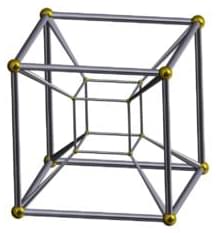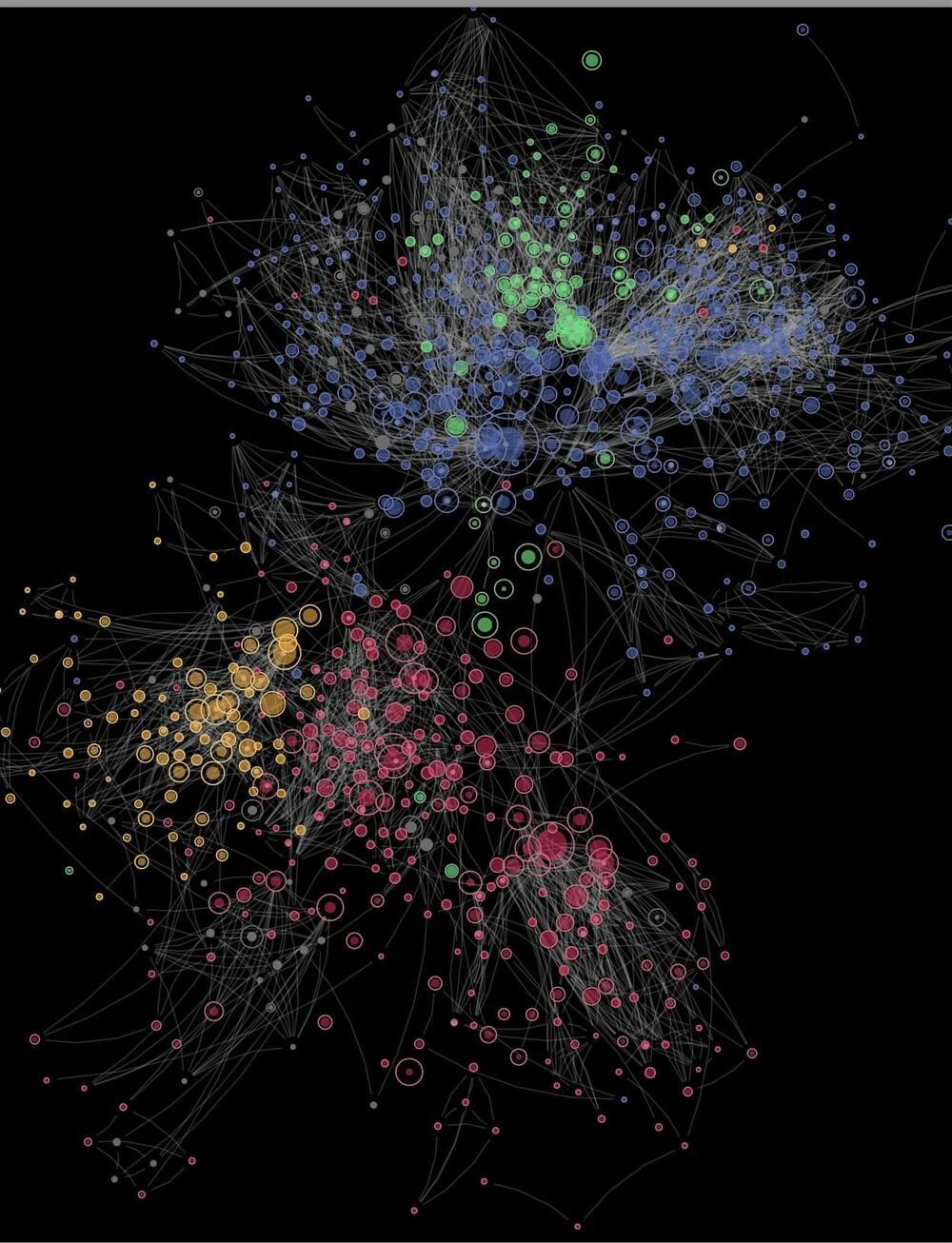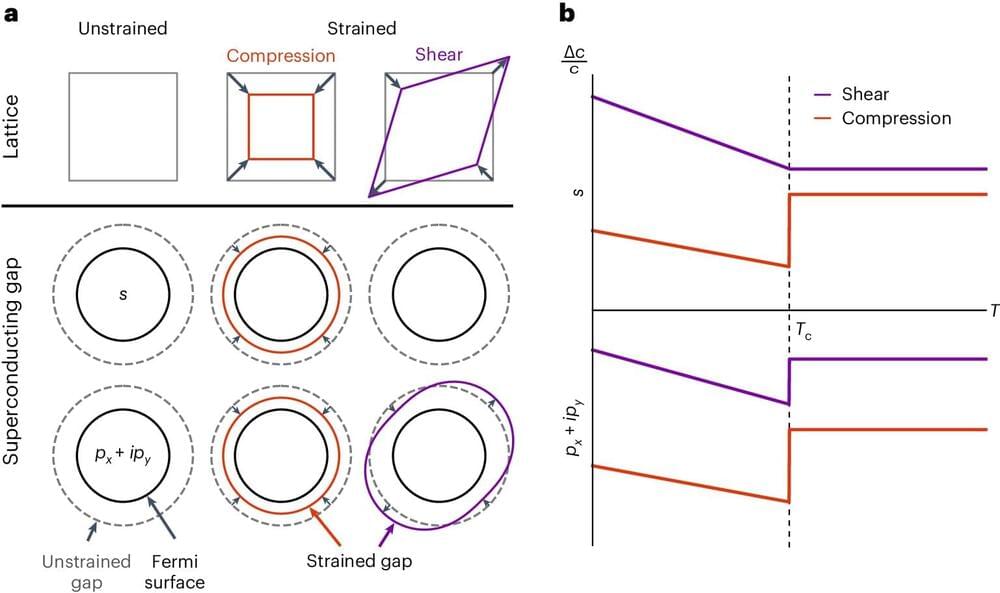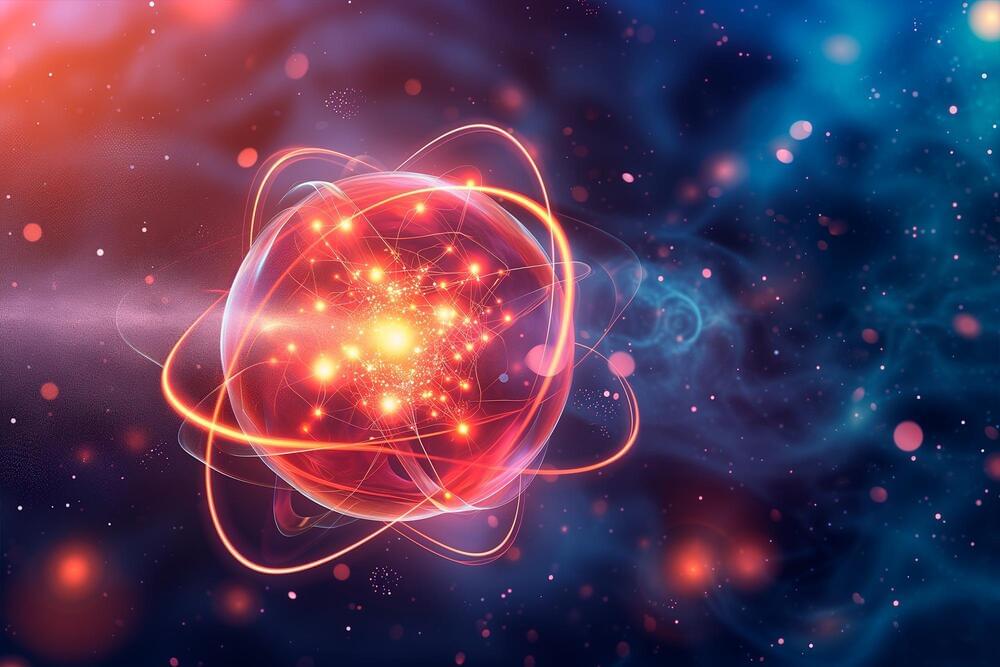This theoretical model for space-time manipulation aligns with established laws. Imagine that.



Scientists believe the environment immediately surrounding a black hole is tumultuous, featuring hot magnetized gas that spirals in a disk at tremendous speeds and temperatures. Astronomical observations show that within such a disk, mysterious flares occur up to several times a day, temporarily brightening and then fading away.
Now a team led by Caltech scientists has used telescope data and an artificial intelligence (AI) computer-vision technique to recover the first three-dimensional video showing what such flares could look like around SagittariusA* (Sgr A• the supermassive black hole at the heart of our own Milky Way galaxy.
The 3D flare structure features two bright, compact features located about 75 million kilometers (or half the distance between Earth and the sun) from the center of the black hole. It is based on data collected by the Atacama Large Millimeter Array (ALMA) in Chile over a period of 100 minutes directly after an eruption seen in Xray data on April 11, 2017.

From the article by Robin Hanson, a professor of economics who also holds degrees in physics and computer science.
So this remains my worry: our rapid rates of change in unconditional choices of cultural norms are not mostly driven by reason, but instead by a cultural evolution process that has…
I’ve been reading, thinking, and talking, trying to get clearer on what exactly are the culture problems I’m worried about, and how best to describe them. I seek descriptions not only easy for an outsider public to understand, but also for prestigious insider specialists to embrace.
It seems maladaptive culture might be a better name for the problem. So that is the title of this post. Also, I tentatively see four key ways to distinguish more from less problematic cases; the big problems that I fear sit mainly in one corner of that 16-cornered 4D cube of possibilities. Here are the four dimensions:
1. First, culture can work great when tied to particular relevant observable outcomes and inputs. If you want to catch more fish, it can make sense to copy the fishing-related behaviors of the people around you who catch the most fish. You need to be able to tell who gets more fish value (e.g., quantity and size) per effort invested (e.g., time and harms) and you also need to be able to tell which of these folks’ many features and behaviors are plausibly oriented to catching fish. So you can’t do this sort of cultural change until you’ve developed sufficient cultural gadgets to see these things. But once you do, things can work great.

In the scientific literature, a citation acts as a mechanism to signal prior knowledge, enhance credibility, and protect against plagiarism. But it also gives credit to the individual or team who established or discovered the knowledge in question, and citations have thus emerged as a metric to measure the impact of a work or researcher.
AD — Go to https://ground.news/drbecky to stay fully informed with the latest Space and Science news. Subscribe through my link to get 40% off the Vantage plan for unlimited access this month only. | I often get asked how do we know dark matter exists? Which is why I’ve made a video on all the observational evidence we have before (linked below)! But occasionally I’ll get asked how do we know how much dark matter there is, which is a really fun question. There’s many different ways we can calculate this, including the ratio between normal (baryonic) and dark matter, but in this video I just wanted to highlight three different ways astrophysicists calculate this.
Here’s my previous video on all the evidence we have for dark matter — • All the evidence we have for dark mat…
My previous video on whether dark matter could be made of black holes — • Is dark matter made of black holes?
My previous video on whether black holes contain dark matter — • Do black holes contain dark matter?
My previous video on why galaxies merge if the universe is expanding — • If the Universe is expanding, then wh…
Allen, Evrard \& Mantz (2011; review on galaxy clusters observations) — https://arxiv.org/pdf/1103.4829
Zwicky (1933; first virial theorem paper in German) — https://articles.adsabs.harvard.edu/p…
Zwicky (1937; virial theorem applied to the Coma cluster) — https://articles.adsabs.harvard.edu/p…
Alpher, Bethe, \& Gamow (1948; big bang nucleosynthesis; behind paywall) — https://journals.aps.org/pr/abstract/.…
Alpher \& Herman (1950; more BBN work; behind paywall) — https://journals.aps.org/rmp/abstract…
Planck collaboration (2015; cosmological parameter results for our best model of the Universe) — https://arxiv.org/pdf/1502.
00:00 Introduction.
02:04 Ground News AD
03:54 Method 1 — Galaxy Clusters and the virial theorem.
08:49 Method 2 — Big Bang Nucleosynthesis.
11:39 Method 3 — Cosmic Microwave Background.
14:35 Outro.
15:24 Bloopers.
Video filmed on a Sony ⍺7 IV
🎧 Royal Astronomical Society Podcast that I co-host: podfollow.com/supermassive.

A new article explores the physics behind the popular party trick of infinite mirrors, explaining why it may not actually create infinite reflections. While it may seem like a never-ending loop, the reality is that the reflections eventually become too faint to see. This phenomenon is a result of the way light behaves and can be explained by the laws of physics.

Does free will exist? Neil deGrasse Tyson and Chuck Nice sit down with astrophysicist Charles Liu sit down to discuss the existence of free will and whether physics allows for choice in our lives.
We explore cause and effect: how does uncertainty and chaos in the universe factor into free will? How important is the illusion of free will to society? What does a society that acknowledges a lack of free will look like?
Check out our second channel, @StarTalkPlus.
Get the NEW StarTalk book, ‘To Infinity and Beyond: A Journey of Cosmic Discovery’ on Amazon: https://amzn.to/3PL0NFn.
Support us on Patreon: / startalkradio.
FOLLOW or SUBSCRIBE to StarTalk:

An international research team at the Facility for Rare Isotope Beams (FRIB) at Michigan State University has successfully created five new isotopes, bringing the stars closer to Earth.
The isotopes — known as thulium-182, thulium-183, ytterbium-186, ytterbium-187, and lutetium-190 — were reported Feb. 15 in the journal Physical Review Letters.
These represent the first batch of new isotopes made at FRIB, a user facility for the U.S. Department of Energy Office of Science, or DOE-SC, supporting the mission of the DOE-SC Office of Nuclear Physics. The new isotopes show that FRIB is nearing the creation of nuclear specimens that currently only exist when ultradense celestial bodies known as neutron stars crash into each other.
